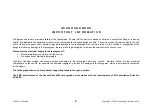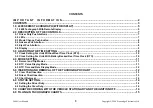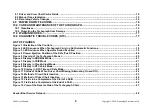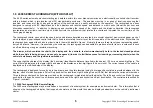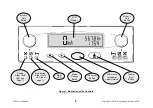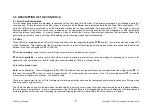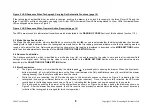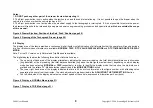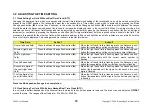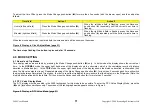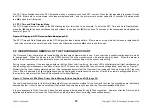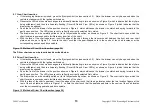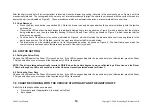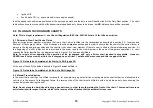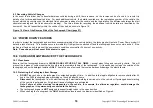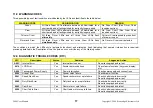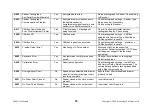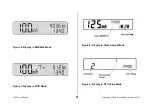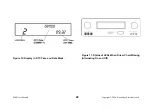
2400 User Manual
Copyright © 2004 Stoneridge Electronics Ltd
7
2.0 DESCRIPTION OF THE CONTROLS
2.1 Driver Duty Push-buttons
Two individual push-buttons are provided, respectively for the Duty and Off-Duty driver (if two drivers are present), for initiating a period of
recorded duty. Within this manual, the Duty driver is referred to as the
Driver
and is allocated the left hand Driver Duty push-button (
“1”
),
while the Off-Duty driver is referred to as the
Crew
and is allocated the right hand Driver Duty push-button (
“2”
). The mode of duty (as
described below) for the Driver or the Crew is selected by the appropriate Driver Duty push-button and displayed by LEDs immediately
below the relevant push-button. In order to change a mode of activity the Driver or Crew member will press their respective Driver Duty
push-button a number of times, until the LED indicating the forthcoming mode of duty is illuminated.
2.2 LEDs
Three LEDs are located below each Driver Duty push-button, with the respective legends
4
,
1
and
2
. In normal operation a single LED
will be illuminated. This indicates that the Driver/Crew member is in one of the following activity modes, which correspond with the activities
defined in the Council Regulation (EEC) 3821/85:
4
indicates
working
– used to record non-driving active work (such as loading a vehicle etc.)
1
indicates
available
– used to record time when a driver is waiting to start driving (such as waiting for passengers to arrive or for
paperwork to be completed etc.) and to record time spent travelling as Crew in a moving vehicle.
2
identifies
break
or
rest
.
Note:
As an alternative, Council Regulation (EEC) 3821/85 allows all non-driving activities to be recorded under the single symbol
1
. In
this case, the symbol
4
is then not used for legal records. This alternative use is common in the UK, where the symbol
4
is used for
convenience to indicate ‘out-of-scope’ or ‘off-road’ driving.
There is no requirement for an LED to indicate normal driving activities, because the tachograph automatically switches to Driving mode
when the vehicle begins to move.
The LEDs can also be used to indicate when the tachograph is carrying out activities other than chart recording and to indicate problems
that the device has identified. In some circumstances, the LEDs will flash in a distinguishable pattern to indicate that the tachograph is
performing actions other than chart recording (for example aligning the chart or charts within the unit) as shown in Figure 2.


